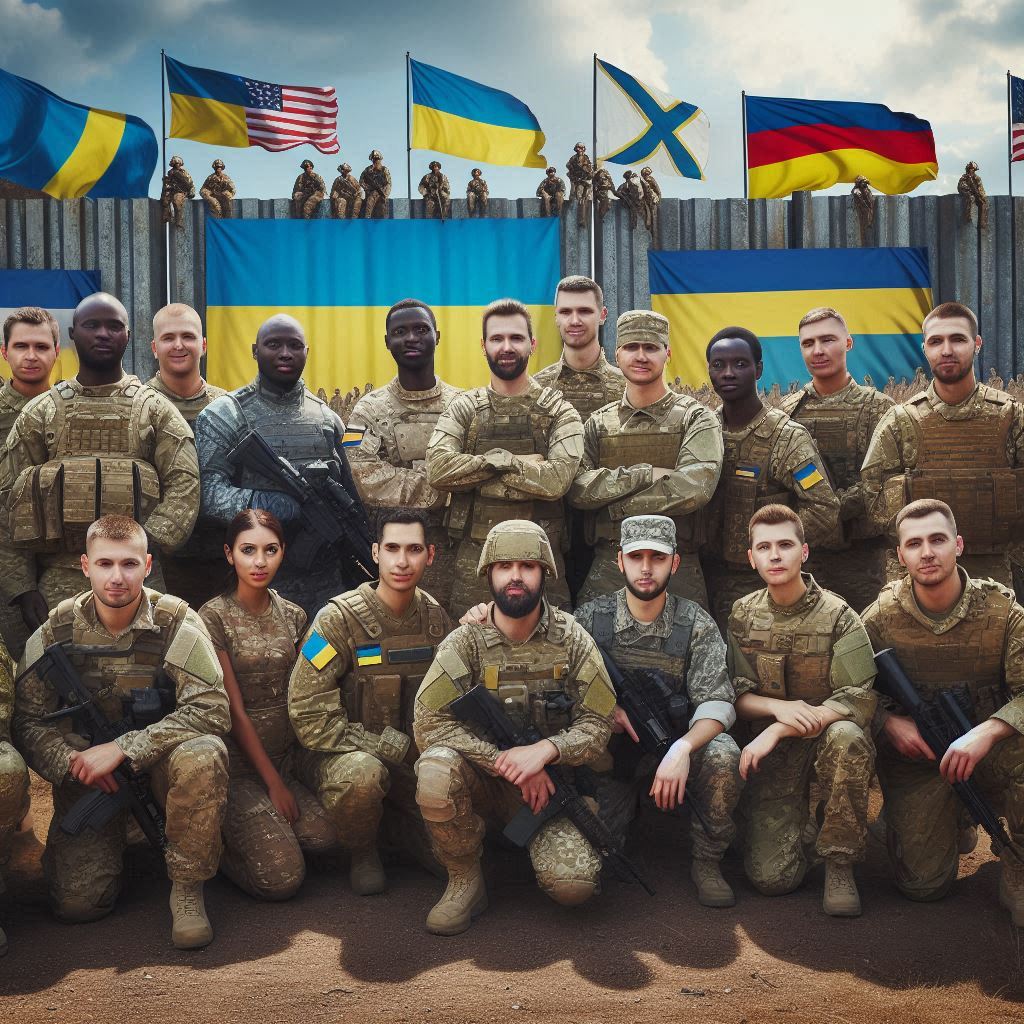俄羅斯入侵烏克蘭已經滿三周年
2022年2月24日,俄羅斯全面入侵烏克蘭,這場戰爭迅速成為自二戰以來歐洲規模最大的武裝衝突。戰爭爆發的導火線可以追溯到更早之前的歷史與政治糾葛。
2014年,俄羅斯併吞克里米亞並在烏東地區支持親俄分離主義武裝,已經使烏克蘭局勢動盪不安。而在戰爭爆發前的幾個月,俄羅斯總統普丁宣稱北約東擴威脅俄羅斯安全,要求北約承諾不再接納烏克蘭為成員國。然而,這些要求遭到拒絕。接著,俄羅斯開始在烏克蘭邊境集結大軍,最終於2022年2月24日發動全面入侵,聲稱要進行「特別軍事行動」,目的是「去納粹化」與「保護烏東地區的俄語居民」。
初期的戰爭進展令世界震驚。俄軍自北、東、南三面進攻,一度兵臨基輔城下,企圖迅速推翻烏克蘭政府。然而,烏克蘭軍隊在總統澤連斯基的領導下,憑藉強大的抵抗意志與西方情報、武器支援,成功守住首都並迫使俄軍於數週內撤退至烏東戰線。自此,戰爭進入長期膠著狀態。
雙方在這三年間都付出慘重代價。俄羅斯方面損失大量兵力與裝備。根據西方情報與烏克蘭數據,俄軍已經損失超過80萬名士兵(包括陣亡與重傷),並有數千輛坦克與裝甲車被擊毀。特別是2023年的巴赫穆特戰役,雖然俄軍最終佔領該市,但也為此付出極高的代價,包含大量「瓦格納集團」的傭兵陣亡。此外,國際制裁重創俄國經濟,雖然莫斯科政府試圖轉向中國、印度等國尋求經濟合作,但仍無法完全緩解金融與科技封鎖的影響。
烏克蘭方面則雖然展現出驚人的軍事韌性與全民抗戰精神,但傷亡同樣慘重。據報導,烏軍的傷亡人數應該超過40萬人,許多城市基礎設施被俄軍飛彈摧毀,平民死傷無數。馬里烏波爾、巴赫穆特等地的廢墟景象成為戰爭殘酷的象徵。烏克蘭經濟遭受重創,超過上千萬的難民逃往歐洲各國,基礎建設與能源系統屢屢遭俄軍攻擊,使烏克蘭陷入持續的人道危機。
然而,到2024年底,戰局逐漸發生變化。美國國內的政治氛圍轉向孤立主義,國會對烏克蘭的軍事與經濟援助進一步縮減。共和黨內部的反對聲浪高漲,要求美國將資源專注於自身邊界與國內問題。這使得烏克蘭失去最重要的軍火與資金來源,前線的防禦壓力驟增。如果沒有美國的持續支持,戰爭可能朝以下方向發展:
首先,烏克蘭將被迫大幅削減反攻行動,專注於固守現有防線。然而,彈藥與武器的短缺將讓俄軍找到更多突破口,特別是在烏東地區與南部戰線,俄軍可能逐步推進,試圖佔領更多領土。
其次,歐洲雖然仍然支持烏克蘭,但在美國退出後,無論是軍事裝備還是財政援助,歐洲各國都難以單獨填補這個巨大缺口。波蘭、波羅的海國家或許會加強軍援,但德法等國則更傾向推動停火談判,而不是延長戰爭。
最令人擔憂的是,這可能迫使烏克蘭政府重新評估立場,在國際與國內的壓力下,被迫與俄羅斯展開談判。普丁可能會趁機要求烏克蘭承認俄軍在頓巴斯與克里米亞的控制權,甚至進一步推動讓烏克蘭保持中立、不加入北約的條件作為「和平協議」的基礎。最悲觀的情境是,假如俄軍取得戰場上的決定性勝利,基輔政府可能被迫簽下對自己極為不利的停戰協議,這不僅會削弱烏克蘭的主權,也將讓俄羅斯在區域內更加囂張,對其他東歐國家造成巨大壓力。
當然,戰爭的未來仍有許多變數,尤其是烏克蘭人民與軍隊的頑強抵抗,以及全球輿論對俄羅斯侵略行為的譴責,都將影響最終結局。但無可否認的是,沒有美國的支援,烏克蘭的戰爭處境將變得更加艱難,而俄羅斯則可能藉此鞏固自己的戰果,改變東歐的政治格局。
On February 24, 2022, Russia launched a full-scale invasion of Ukraine, marking the largest armed conflict in Europe since World War II. The origins of this war can be traced back to long-standing historical and political disputes.
In 2014, Russia annexed Crimea and supported pro-Russian separatist forces in eastern Ukraine, destabilizing the region. In the months leading up to the invasion, Russian President Vladimir Putin claimed that NATO’s eastward expansion threatened Russia’s security and demanded assurances that Ukraine would not be allowed to join NATO. These demands were rejected. Subsequently, Russia began a massive military buildup along Ukraine’s borders, and on February 24, 2022, it launched a full-scale invasion under the pretext of a "special military operation", citing the goals of "denazification" and "protecting Russian-speaking residents in eastern Ukraine."
The initial phase of the war shocked the world. Russian forces attacked from the north, east, and south, rapidly advancing toward Kyiv, aiming to overthrow the Ukrainian government in a swift assault. However, under President Volodymyr Zelenskyy’s leadership, the Ukrainian military displayed strong resistance, bolstered by Western intelligence and military aid, successfully defending the capital and forcing Russia to retreat to the eastern front within weeks. From that point onward, the war entered a prolonged stalemate.
Over the past three years, both sides have suffered immense losses.
On the Russian side, heavy casualties and equipment losses have been reported. According to Western intelligence and Ukrainian sources, over 800,000 Russian soldiers (including those killed and severely wounded) have been lost, along with thousands of tanks and armored vehicles. One of the bloodiest battles, the Battle of Bakhmut in 2023, saw Russia ultimately capture the city, but at an extreme cost, including the deaths of a significant number of Wagner Group mercenaries. Additionally, international sanctions have severely weakened the Russian economy. While Moscow has sought economic partnerships with China, India, and other countries, these efforts have not fully mitigated the impact of financial and technological restrictions.
On the Ukrainian side, military resilience and national unity have been remarkable, but the cost has been devastating. Reports estimate that Ukrainian military casualties have exceeded 400,000, and countless civilians have been killed or injured. Entire cities have been reduced to ruins by Russian missile strikes, with places like Mariupol and Bakhmut serving as symbols of the war’s brutality. The Ukrainian economy has suffered greatly, with over 10 million refugees fleeing to European countries. Meanwhile, Russia’s continued attacks on infrastructure and energy systems have left Ukraine in a state of ongoing humanitarian crisis.
By late 2024, the war’s dynamics began to shift.
In the United States, domestic politics moved toward isolationism, leading to reductions in military and financial aid to Ukraine. Within the Republican Party, opposition to further support for Ukraine grew, with increasing demands to prioritize U.S. border security and domestic issues. As a result, Ukraine lost its most crucial source of weapons and funding, placing tremendous pressure on its frontlines.
If U.S. support continues to decline, the war could unfold in the following ways:
Ukraine may be forced to scale back counteroffensives and focus on defensive operations. However, shortages of ammunition and weapons could create opportunities for Russian advances, particularly in eastern and southern Ukraine, where Russian forces may attempt to gradually seize more territory.
European nations remain supportive of Ukraine, but without U.S. backing, they lack the capability to fill the military and financial gap. Countries like Poland and the Baltic states may increase their support, but Germany and France are more likely to push for ceasefire negotiations rather than prolong the war.
The most concerning scenario is that Ukraine could be forced into negotiations with Russia due to mounting international and domestic pressure. Putin may seize this moment to demand Ukrainian recognition of Russian control over Donbas and Crimea, and possibly push for Ukraine’s neutrality and permanent exclusion from NATO as conditions for a so-called "peace agreement."
In the worst-case scenario, a decisive Russian military victory could force Kyiv to sign an unfavorable ceasefire, severely undermining Ukraine’s sovereignty. This would embolden Russia, increase pressure on other Eastern European nations, and reshape the region’s geopolitical landscape.
The war's final outcome remains uncertain, influenced by Ukrainian resistance, global public opinion, and ongoing diplomatic efforts. However, without continued U.S. support, Ukraine’s position will become increasingly difficult, while Russia may solidify its territorial gains and reshape the balance of power in Eastern Europe.

照片:DALLE3
- 1
- 2
- 3
- 4
